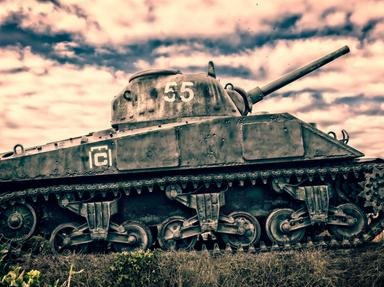Quiz Answer Key and Fun Facts
1. The SAS/Commandos needed a rifle/carbine that was silenced for clandestine operations. They received one, and what was its name?
2. Name the British Commandos' fighting knife.
3. The German FG42 was developed for use by the Waffen-SS as a light machine gun/automatic rifle role.
4. Who developed the Italian breech-loading mortar, the Modello 35?
5. The British devised a lightweight spigot mortar for infantry use. What was its name?
6. The OSS/SOE used a small, single-shot .22 calibre weapon. What was its name?
7. PIAT stood for Projector, Infantry, Anti-Tank.
8. The US Army was about to consider adopting the Jonson M1941 Rifle in 1942?
9. Which country did not issue scabbards with bayonets?
10. What weapons were issued to Japanese officers as a symbol of their status, and why?
Source: Author
currahee
This quiz was reviewed by FunTrivia editor
bloomsby before going online.
Any errors found in FunTrivia content are routinely corrected through our feedback system.


